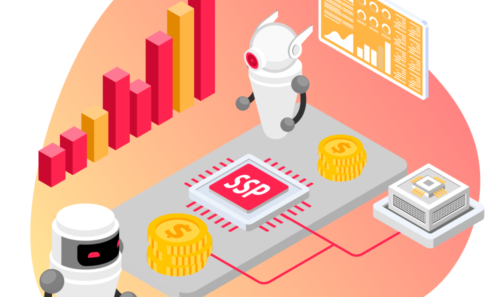Black Friday & Cyber Week 2021: Last-Minute Prep for Publishers
LOW-HANGING FRUITS FOR BLACK WEEK: OPTIMIZATION, CONTENT STRATEGY & DEALS
What started as an American tradition of highly promoted sales on the day after Thanksgiving is now one of the most crucial days for the entire digital marketing industry. Black Friday, followed by Black Week & Cyber Week, is the beginning of the holiday shopping season and the time of high earnings for digital publishers. So how do you get the most out of Black Friday? Should you suddenly change your monetization strategy? What content will drive more customer engagement during the holidays and will bring the highest CPMs?
Table of contents
Should digital publishers change their long-term strategy and make any adjustments on such short notice?
How to start such last-minute adjustments?
Optimize manual optimizations
Urge buyers to spend money using deals
Prepare your content for Black Week
Smart improvements without radical changes in the strategy
What publishers should know about selling private deals, especially in this period?
Let’s start with the key question publishers focused on web monetization may be asking themselves now that Black Friday is roughly a week away. Should digital publishers change their long-term strategy and make any adjustments on such short notice? Aren’t the ad setup changes a few days before Black Week too risky in terms of performance and ad earnings?
Krzysztof Lis, Partnerships & Consultancy Expert, Yieldbird: The earlier you start, the faster you can evaluate the numbers available, however, for those publishers who have so far taken no action to adapt their monetization strategy, a few low-hanging fruits remain. Speaking of the overall direction of the website monetization strategy, last-minute pre-Black Week adjustments should remain the same as the long-term strategy, which is to improve the quality of your inventory. Publishers must price their inventory according to the value they are providing – this is the most critical parameter considered when buyers (advertisers) are thinking about where to spend their campaigns budgets. And whenever a publisher makes changes, these changes will be noticed by the market.
How to start such last-minute adjustments so that inventory is more accessible to advertisers during Black Friday and Black Week?
The first thing we should think about is changing or adjusting the Unified Pricing Rules – so-called UPRs – to make the Open Market more accessible. Make the buyers spend more by simply lowering the floor prices. But we don’t want to keep those low floor prices for long because eventually, they might indicate to the market that the value of this inventory is relatively low or lower than previously.
So in that period of increased spending, we can lower the UPRs for some time and then, eventually, bring them up to the previous higher level. But if we leave them for a week or two at a lower level, this should not affect the long-term performance of the inventory.
So publishers who want to quickly tune their inventory to the realities of Black Friday and shopping frenzy should start with an assessment of what – low but realistic – floor prices they can offer. Do we have any additional tips here?
In fact, there is one less general idea. Whenever I was bidding for anything, I would always use a number that was not around. So, for example, if I were bidding for something on the internet and wanted to buy it for 10$, I would bid at 10.03$. So the Publishers who have their UPR in dollars should at least think about lowering it a bit because 50 cents versus 49 cents might make all the difference. Also, we should never forget that it’s always easy to sell everything for a low price, but it is not the approach that we want to take because we want to make the most of the specific number of ad requests available. So the best practice is always to make the UPRs as granular as possible, especially in terms of specific brands, GEOs, specific ad units, or ad sizes. But of course, general advice would be to try to change it for a period and then observe the changes in the fill rate and the CPMs.
The issue of granularity of floor prices sounds like a breakneck if it is to be done manually. Can you solve it cleverly? Optimize the optimization process?
Manual price adjustments are slowly becoming obsolete. Major publishers now focus on automating this process, not only during Black Week but also on a daily basis. A human, even an expert in data analysis, has no chance to comprehensively map current trends, both in their inventory and in the market, as effectively as algorithms do. As a result, publishers who have implemented automated pricing solutions achieve the highest earnings from the Open Market in 2021. We are talking about at least a two-digit advantage (almost always), and in the vast majority – of 20-30% higher results when compared to a similar inventory optimized manually. At least, that’s our experience with the PriceGenius solution.
We know what to do to adjust the website’s monetization strategy through the Open Market. What should publishers do next?
The second thing that publishers should do whenever feasible is to get in touch with the buyers they know and trust and urge them to spend more money using deals. Suppose the buyers are using Preferred Deals that are not flexible in terms of the price. Publishers can always create two or three additional deals with lower prices and then state: “Well, now you could use this one. This is a bit cheaper. It should provide you with the same value of inventory, the same value of traffic, the same quality of traffic. So you should probably think about considering spending more money here.”
Publishers can then provide their buyers with some additional targeting options not available elsewhere; for example, you can target specific sections of the page and specific tags within the domain or specific user groups that are not targeted. “Targetable elsewhere” means that publishers can get some additional fee because this value might be used for the buyers. But not all publishers can do this on their own because they don’t have their own sales teams. Nor do they have relationships with the buyers.
In this situation, what can be a clue to establishing such a relationship?
I’d suggest looking at those who were spending the most in this period last year, and we floor them high or offer them deals – special offers. The key spenders in most of the cases will be the technological companies. It’s really not too late to contact them with something extra.

Black Week is getting closer, and you are still not sure if your website will bring a good income? 💸
Reveal the full potential of your ad setup right away with our 𝗔𝗱 𝗦𝘁𝗮𝗰𝗸 𝗥𝗲𝘃𝗶𝗲𝘄 🚀
Our Experts will analyze the indicated areas of your setup step by step and provide ready-to-implement data-driven recommendations to boost your ad revenue!
What can you advise about the content? Do you think Publishers for this specific period should try and generate more content? What kind of content can get high-spending users to your page?
Well, so far, we have covered the concept of squeezing more money out of the traffic you already have, but it will also be wise to try to increase the traffic in this period. So one of the strategies that publishers should at least consider is changing the amount of content they produce. Especially if you are in a group of publishers, who are making the content about, for example, phone-related deals for Black Friday 2021. So if you have technology-related content, usually, then you can always produce an article about this issue, explaining where to find the cheapest device at this point. People are always looking for new ways to spend their money and especially new ways to save money. So if publishers produced this kind of article last year, then they should do so this year.
This is also crucial for the niches or the verticals that have low traffic for this moment of the year. For example, people are not looking for travel opportunities because traveling is problematic all the time, so they’re not willing to spend any money at this point. But they might be thinking about where they will go next year. As a publisher on a travel-related website, you can, for example, try to create content for products that are needed on the go and during your vacation. Doing so can help you take advantage of a wave of better revenues.
It is also essential that consumers are overloaded with information about what they can buy and why during this period. Therefore, you need to diversify your content and care for the overall user experience. Finally, remember that we want users to come back to us after Q4 is over.
Publishers should also not forget that brands want to avoid some sensitive topics when promoting their products – especially during Black Week. One of the keywords that can block a successful transaction is “pandemic” and all related words. So whenever you put a word like a pandemic or COVID or Coronavirus, or something like that, a particular URL might be filtered or marked as not brand-safe. You will not be able to monetize it because the essential brands who need to use those filters will not buy your traffic on your content because of the incorrect word. So using incorrect words might flag your article as not being suitable for some of the products.
The activities you mentioned may be resource-intensive and time-consuming that publishers may not have anymore before Black Week. What would you recommend to Publishers who are all about smart improvements without radical changes in the strategy or their approach to their job?
Well, I would suggest doing two things first and foremost. Instead, once you get the user, you should keep them for as long as possible. So if you have an ad server in place, you should implement an auto-promotional campaign that will redirect the traffic from one place to another. You should also, if possible, add some internal links, maybe in some related articles, because it’s always easier to keep the user on the page than to get additional users from elsewhere. So this is the best way of utilizing all the unfilled impressions by simply displaying or employing other promotional campaigns.
If you have more than one domain and can differentiate the traffic somehow, maybe you could show one creative to a fraction of the people and another creative to the rest; and move the traffic between your websites.
Well, to that point, if you cannot move the people around, you could at least try to capture them by providing them with something of value that they can get in exchange for giving, say, their email address; and then build your email list and use it in the future because publishers should consider all approaches to monetizing or capitalizing on the traffic.
A lot of information about deals appeared in your replies. Why is selling private deals so demanding, especially in this period?
We always believe that the Programmatic ecosystem is more manageable because everything is automated. This is correct to some extent, but only on the Open Auction. And the most complex and time-consuming task would be to get in touch with all the buyers you are willing to sell your impressions to, making recourse to private deals.
Also, another thing that needs to be considered is that as a buyer, whenever I use a deal, the deal is intended to provide me with some additional value that I couldn’t get from the Open Exchange. This is the only reason why I would consider using a deal. So the most crucial thing in terms of setting up those deals is to have some additional value that you can provide the buyers with. So the most challenging thing when thinking about the deal is the time it will take to do the setup and discuss its details with the various partners.
Always look to get information about those users who are providing the buyers with more value. Consider creating private deals and offering them on the market to trusted buyers. For those who read a specific portion of your articles and are further along the purchase path, you should create a separate view in your content that targets specifically those people.






